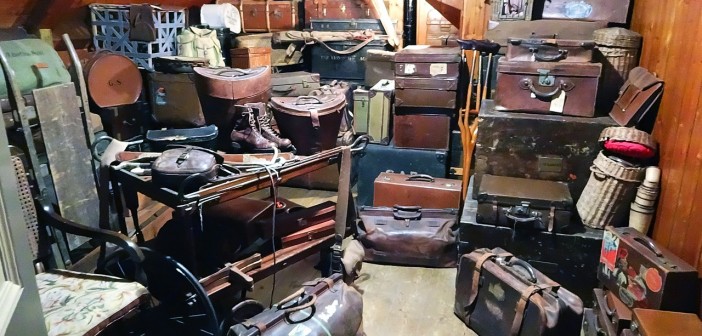What needs to die in your church? We begin the journey of restarting your church by allowing for, even encouraging, places of death. We choose to have a memorial service for what worked in the past, to honor the prior period of time, and to make a decision to move forward. We choose to let the past set us free to fly, instead of letting the past become a shackle that chains us to a certain way of doing things.
Look around you with fresh eyes, and you will see obvious signs of the past still trying to shackle life in your church. The first thing I see inreStart churches is clutter. Enormous amounts of clutter and disorganization. Clutter that looks like hoarding.
We don’t worship our stuff, our memories, our dreams, our dashed hopes, or our traditions. We worship our God.
In my current church, we spent my first year clearing out massive amounts of clutter. One day early in my tenure I walked into the nursry where the children are cared for during Sunday morning, and there was an aisle to walk through that led to a station with toys in the back of the room. The first thing I saw when I stepped into the room was a big sign that read “Do Not Come in Here without an adult!” I understood the sign because the area really was a danger zone. The “aisle” was actually a little path that cut through tall stacks of equipment, papers, toys, boxes, books, and papers. There was so much stuff crammed into the room that it was massively depressing.
As we began cleaning out the nursery, we found old vacation Bible school papers from four decades prior. While they were fascinating to see in a memorabilia sort of way, they weren’t doing any good stacked in boxes and cluttered piles in the nursery. As we began throwing this stuff away, there was a lot of pain around letting it go. The people worried that they might need that curriculum, since it was expensive to buy new VBS materials. They thought perhaps we needed to store it somewhere, just in case it might be needed. They groaned, grieved, held tight, and fought as we all pried our fingers off the stuff of our history.
Some churches may not have literal clutter but rather institutional or habitual clutter. “We’ve always done it this way” is a common statement about clutter. “I can’t worship without my hymn … my cross … my pew” are declarations of a cluttered soul. The only One we worship is God. We don’t worship our stuff, our memories, our dreams, our dashed hopes, or our traditions. We worship our God. We worship the One who knows how to raise up a king from a person who starts out hiding among the baggage.
There is hope for us. We may have surrounded ourselves with things that were once comforting and are now binding, but God still can choose us to lead the way forward. There’s hope for clutterdwellers, hoarders, and memory-storers. There’s hope for the fearful ones who hold on with clenched hands. There’s hope because God can make a way.
Remember the words of remembrance called the Shema, which centered the people of Israel: “Israel, listen! Our God is the Lord! Only the LORD! Love the LORD your God with all your heart, all your being, and all your strength” (Deuteronomy 6:4-5).
The people were first admonished, encouraged to hear, to open up their ears to receive the sounds of the message. And the message was one of great love. Love God fully and wholly and completely. Love God with great strength.
But instead, when we describe our churches, we speak out words that show the soul’s depressed state. These words are sounds of hopelessness. We come at people, including ourselves, reminding everyone of our faults, as if we have no recognition of the beauty among us. I have done this.
But faith requires hearing, and hearing requires faith in God. When we speak, what story do we tell ourselves, and others? Is it the story of our failings, or the story of how God met us in our failure and showed something new and beautiful among us?
What is your church beautiful at? Does it sound beautiful when it sings? Is it beautiful in community? Is it a beautiful place for mission? What is your church’s beauty, and how can you shout out the good, while changing the not-so-good?
This article is adapted from Dottie’s book, ReStart Your Church (Abingdon Press, 2012) and used with the publisher’s permission. It is available from Cokesbury and Amazon.
Related Resources:
- Review of You Only Have to Die by Lovett H. Weems, Jr.
- Moving in Faith to a New Location by David Abbott
- Becoming a Tribe of Remembering Encouragers by Marc Brown, Kathy Ashby Merry, and John Briggs







